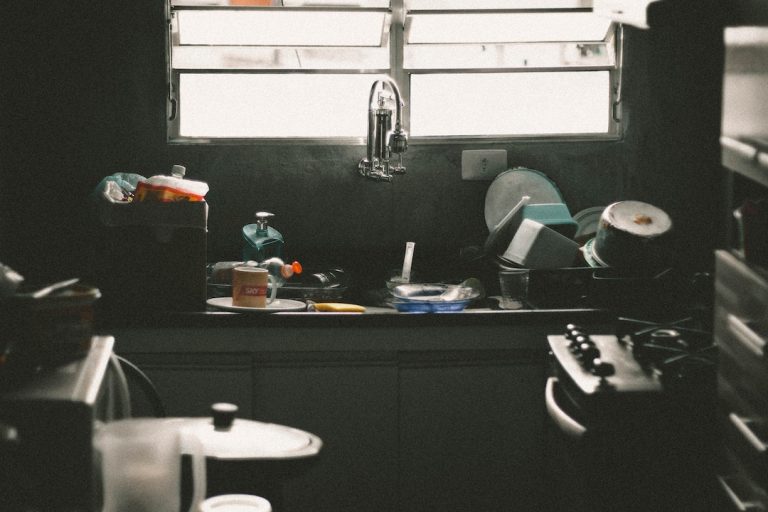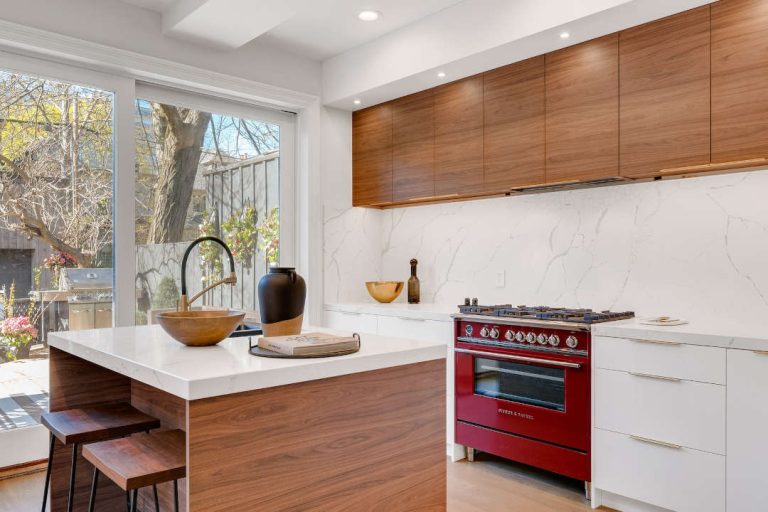Your kitchen is the heart of your home, and the cabinets play a pivotal role in its aesthetics. PVC kitchen cabinets, known for their durability and sleek appearance, require regular cleaning to maintain their shine and pristine condition. In this guide, we’ll walk you through the step-by-step process of how to clean your PVC kitchen cabinets efficiently, ensuring they stay in top-notch condition for years to come.
Understanding PVC Cabinets:
Polyvinyl chloride (PVC) is a synthetic material widely used in various applications, including kitchen cabinets. PVC cabinets are favored for their resistance to moisture, durability, and easy maintenance. However, like any other surface, they accumulate dust, grease, and stains over time, necessitating proper cleaning.
Materials Needed:
Before you start the cleaning process, gather the following materials:
- Mild dish soap
- Warm water
- Microfiber cloths or soft sponges
- White vinegar
- Baking soda
- Olive oil or commercial furniture polish
- Soft-bristle brush or an old toothbrush
- Bucket
- Water-filled spray bottle
- Clean, dry cloth
Step-by-Step Cleaning Process:
Remove Items from Cabinets:
Start by removing items from the cabinets to access all surfaces easily. This ensures a thorough cleaning process and prevents any damage to your belongings.
Dry Dusting:
Begin by dry dusting the cabinets using a microfiber cloth or a soft sponge. This helps remove loose dirt, dust, and cobwebs from the surface. Pay special attention to corners and crevices where dust tends to accumulate.
Prepare a Cleaning Solution:
In a bucket, mix a few drops of mild dish soap with warm water. This gentle solution effectively cleans PVC cabinets without causing any damage. Stir the mixture until it forms suds.
Wipe Down Surfaces:
Dip a microfiber cloth or soft sponge into the soapy water solution and wring out excess liquid. Wipe down the cabinet surfaces, including doors, handles, and edges. For intricate details and grooves, use a soft-bristle brush or an old toothbrush.
Address Stubborn Stains:
For stubborn stains or grease marks, create a paste by mixing baking soda with a small amount of water. Apply the paste to the stained areas and gently scrub with a soft brush or cloth. Baking soda’s mild abrasive properties help lift stains without scratching the PVC surface.
Rinse with Clean Water:
After cleaning, rinse the cabinets with clean water to remove any soap residue. Use a water-filled spray bottle for a controlled and even rinse. Wipe the surfaces with a dry cloth to ensure they are completely dry.
Tackle Lingering Odors:
If your cabinets have absorbed cooking odors, mix equal parts of water and white vinegar in a spray bottle. Lightly spritz the interior of the cabinets and allow them to air dry. The vinegar will neutralize odors, leaving your cabinets smelling fresh.
Polish for Shine:
To restore the shine to your PVC cabinets, apply a small amount of olive oil or a commercial furniture polish. Use a clean, dry cloth to buff the surfaces in a circular motion. This not only enhances the shine but also creates a protective layer against future stains.
Reorganize and Return Items:
Once the cabinets are clean and dry, reorganize your items and return them to their designated places. This is also an excellent opportunity to declutter and get rid of items you no longer need.
Maintenance Tips: The Expert’s Approach to Deep Cleaning PVC Kitchen Cabinets
- Regular Dusting: Dust your PVC cabinets regularly to prevent the accumulation of dirt and grime. A quick dusting with a microfiber cloth will help maintain their polished appearance.
- Immediate Spill Cleanup: Wipe off spills and splatters immediately to prevent stains and damage. Prompt action ensures that the PVC surface remains resilient and stain-free.
- Avoid Harsh Chemicals: Refrain from using harsh chemicals, abrasive cleaners, or scouring pads, as they can damage the PVC finish. Stick to mild, non-abrasive cleaning solutions for optimal results.
- Use Coasters and Mats: Place coasters under glasses and mats under dish racks to protect cabinet surfaces from moisture and potential damage.
Frequently Ask Questions: How to Clean PVC Kitchen Cabinets
Certainly! Here’s a list of frequently asked questions (FAQs) about cleaning PVC kitchen cabinets, along with concise answers:
Q1: Can I use any cleaning product on PVC kitchen cabinets?
A1: It’s recommended to use mild dish soap and water for routine cleaning. Avoid harsh chemicals or abrasive cleaners, as they may damage the PVC finish.
Q2: How often should I clean my PVC cabinets?
A2: Regular dusting can be done weekly, while a more thorough cleaning, including wiping down surfaces, can be performed monthly. Adjust the frequency based on your kitchen’s usage.
Q3: How do I remove stubborn stains from PVC cabinets?
A3: Create a paste with baking soda and water. Apply it to the stain, scrub gently with a soft brush or cloth, and rinse with clean water.
Q4: Can I use vinegar to clean PVC cabinets?
A4: Yes, you can use a mixture of equal parts water and white vinegar to remove odors from the interior of cabinets. Ensure proper rinsing afterward.
Q5: What’s the best way to maintain the shine on PVC cabinets?
A5: Apply a small amount of olive oil or a commercial furniture polish and buff the surfaces with a dry cloth. This helps restore and maintain the cabinets’ shine.
Q6: Should I remove items from cabinets before cleaning?
A6: Yes, it’s advisable to remove items from cabinets before cleaning to access all surfaces easily and prevent damage to belongings.
Q7: Can PVC cabinets withstand moisture?
A7: PVC cabinets are resistant to moisture, but it’s essential to promptly wipe off spills and splatters to prevent potential damage over time.
Q8: How do I eliminate odors from my cabinets?
A8: Use a mixture of water and white vinegar in a spray bottle to neutralize odors. Spritz the interior of cabinets and allow them to air dry.
Q9: Is it necessary to polish PVC cabinets after cleaning?
A9: While not mandatory, applying a small amount of olive oil or furniture polish can enhance the cabinets’ shine and create a protective layer.
Q10: Can I use a steam cleaner on PVC cabinets?
A10: It’s not recommended to use a steam cleaner, as the high heat and moisture may damage the PVC finish. Stick to gentle cleaning methods for the best results.
Conclusion:
Caring for your PVC kitchen cabinets is a simple yet essential task to preserve their beauty and longevity. By following this comprehensive guide, you’ll not only achieve spotless cabinets but also create a healthy and inviting kitchen environment. Regular cleaning and proper maintenance will ensure that your PVC cabinets continue to shine, enhancing the overall appeal of your kitchen for years to come.
In conclusion, maintaining the pristine appearance of PVC kitchen cabinets is essential for preserving their longevity and aesthetic appeal. By understanding how to clean PVC kitchen cabinets effectively, homeowners can ensure that these integral components of their kitchen spaces remain free from stains, grease, and dirt. Implementing a regular cleaning routine using mild solutions, avoiding abrasive materials, and following manufacturer guidelines can contribute significantly to the cabinets’ durability and luster. Ultimately, the key to a well-maintained kitchen lies in adopting proper cleaning practices, and knowing how to clean PVC kitchen cabinets is a crucial aspect of achieving this goal. With these insights and a commitment to regular maintenance, homeowners can enjoy a sparkling, inviting kitchen environment for years to come.
- How to Clean Kitchen Floor Grout Naturally: Easy DIY Methods - June 25, 2024
- How to Clean Thermoplastic Kitchen Cabinets Properly: Expert Tips - June 19, 2024
- How to Clean Mica Kitchen Cabinets: A Simple Guide - June 19, 2024


![How to Clean Wood Cabinets in Kitchen [Simple Solution]](https://cleaningcarekits.com/wp-content/uploads/2022/12/How-To-Clean-Wood-Cabinets-In-Kitchen-768x512.jpg)
![How to Properly Clean Kitchen Cabinets [Step-by-Step Plan]](https://cleaningcarekits.com/wp-content/uploads/2023/07/how-to-properly-clean-kitchen-cabinets-768x512.jpg)


